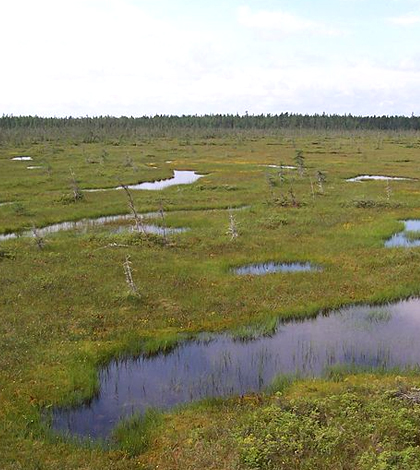Coastal Wetlands In Louisiana Hurt By Canals

Freshwater wetlands in Frontenac National Park, Canada. (Credit: Wikimedia Commons User Boreal via Creative Commons 3.0)
Coastal wetlands in Louisiana are economically important for providing storm protection, flood control, and essential habitats for a myriad of wildlife. They also support important commercial and recreational fishing industries, tourism, and oil and gas industries. But as Louisiana’s wetlands continue to disappear at an alarming rate, a study has pinpointed the man-made structures that disrupt the natural water flow and threaten these important ecosystems.
Scientists at the University of Miami have found that man-made canals limit the natural tidal inundation process in roughly 45 percent of the state’s coastline, and disruptions from levees accounted for 15 percent. Their findings have important implications for New Orleans and other coastal cities that rely on coastal wetlands to serve as buffers from destructive extreme weather events.
Using a remote sensing technique, called Interferometric Synthetic Aperture Radar, the researchers analyzed water-level changes in Louisiana’s coastal wetlands that occurred due to tidal inundation. Based on the detected changes observed, they were able to determine the extent of tidal inundations along the Louisiana coast.
Results showed that man-made structures, such as levees and canals, have changed the regular patterns of tidal inundation in coastal wetlands and have become a main element in determining the distribution of the wetlands.
Scientists say that their findings demonstrate that human infrastructure development along coastal areas can have long-term consequences on the ability of coastal wetlands to adapt to sea-level rise and other processes that reduce the size of coastal wetlands.
Full results of the effort are published in the journal Remote Sensing. It was funded by the National Science Foundation.
Top image: Freshwater wetlands in Frontenac National Park, Canada. (Credit: Wikimedia Commons User Boreal via Creative Commons 3.0)





0 comments